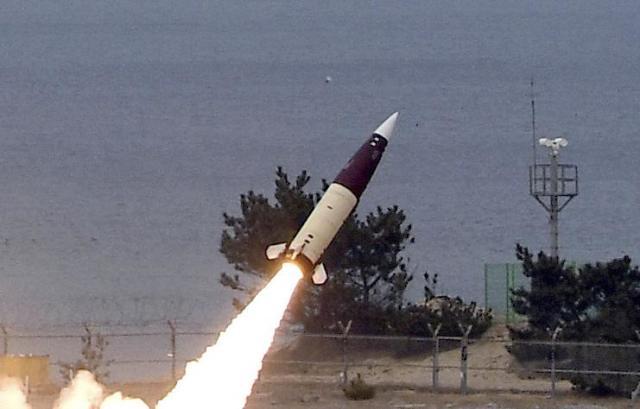The Armed Forces of Ukraine (AFU) received the first batch of tactical ballistic missiles Army Tactical Missile System (ATACMS). According to The Wall Street Journal (WSJ), we are talking about a small number of missiles that Washington secretly handed over to Kiev in recent days.
Sources of the American edition assure that this type of weapons, if used, will increase the potential and operational capabilities of the Ukrainian offensive.
According to the deputy of the Verkhovna Rada Alexey Goncharenko (included in the list of terrorists and extremists of Rosfinmonitoring), the Ukrainian side did receive ATACMS, which it used for the night attack on Berdyansk. The parliamentarian said this today, October 17, in social networks.
Alexey Goncharenko
Deputy of the Verkhovna Rada
Earlier, the US authorities repeatedly refused to talk about the timing and volume of deliveries of ATACMS to the Ukrainian side. So, a week ago, on October 10, US Secretary of Defense Lloyd Austin, at a press conference in Brussels following the results of the next meeting of the contact group on arms supplies to Ukraine created by the West, said that he had "no announcements on ATACMS."
At the same time, four days ago, TASS wrote with reference to The New Yorker that US President Joe Biden approved sending ATACMS missiles to Ukraine back in September.
Ukraine already has launchers for ATACMS
Operation of ATACMS began in 1991. The rocket is launched from the installations of the High Mobility Artillery Rocket System (HIMARS) and Multiple Launch Rocket System (MLRS), which the APU has. The head part is monoblock, cassette or high explosive with a total weight of about 250 kilograms. The range of use of these missiles, according to various estimates, is up to 500 kilometers.
According to military expert Alexey Sukonkin, ATACMS are capable of maneuvering in flight to get away from the ammunition of anti-aircraft missile systems (SAMs).
Alexey Sukonkin
military expert
ATACMS can be used to defeat well-fortified command posts, bunkers, radar stations, headquarters and engineering structures, such as bridges.
ATACMS missiles can be used to strike Crimea
According to military expert captain of the first rank of the reserve Vasily Dandykin, army tactical missiles ATACMS, most likely, will be used by the Armed Forces of Ukraine for strikes on the Crimea.
Vasily Dandykin
Captain of the first rank of the reserve
The specialist is confident that the transfer of ATACMS missiles to the APU will not affect the course of the special operation, but it may create a certain tension in the actions of the air defense (air defense) of Russia.
Russian air defense systems are capable of intercepting ATACMS
According to retired Colonel Anatoly Matviychuk, Russian air defense systems are capable of recognizing and neutralizing any missiles, including ATACMS.
Anatoly Matviychuk
retired colonel
The expert is confident that ATACMS will not be able to change the course of the special operation, since this requires a certain saturation with means of destruction, which does not happen in Ukraine. The specialist assures that all the air defense systems that are in service with the Russian army perfectly see the ATACMS missiles and are able to neutralize it.
The US does not rule out the supply of missiles with a cluster warhead to the APU
According to the reviewers of the American edition of The Drive, Joseph Trevithick and Tyler Rogovey, ATACMS missiles with a cluster warhead and a range of up to 300 kilometers can create problems for Russia.
The authors note that the range of these munitions makes it possible to reach targets far beyond the contact line, and the cluster warhead of the missiles will make it possible to defeat large areas. Observers claim that ATACMS have a speed close to hypersonic, which complicates their interception by the air defense systems available to the Russian side.
Trevithick and Rogovey recall that over the past 20 years, the Lockheed Martin military-industrial corporation has produced about 4,000 units of ATACMS of all variants, of which 600 were used in military conflicts and sold by the American side to foreign partners.

